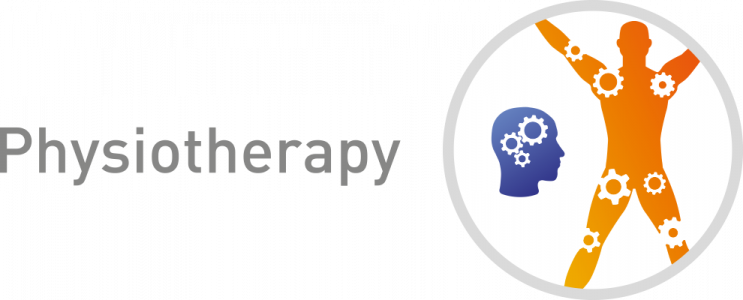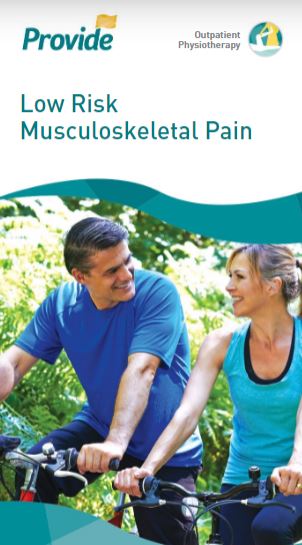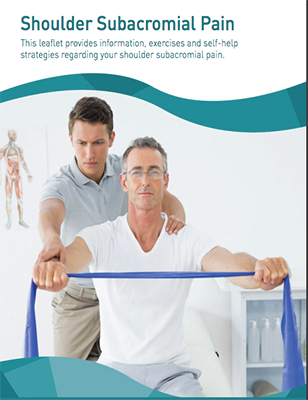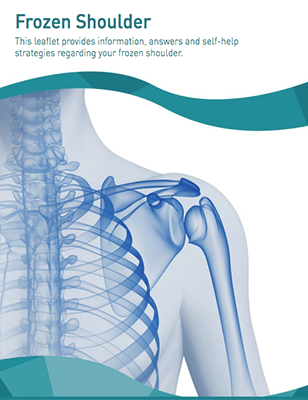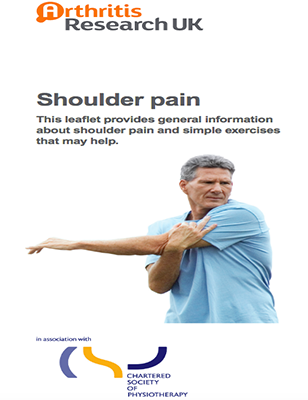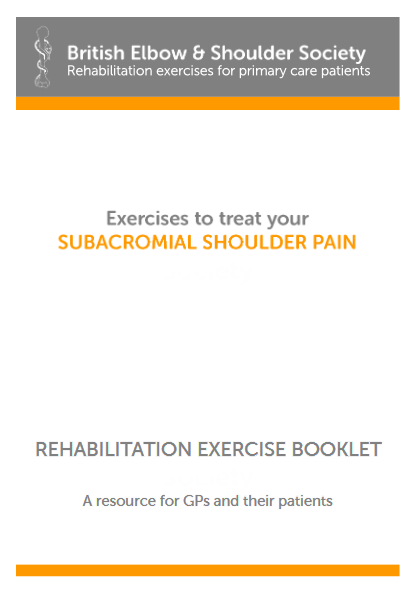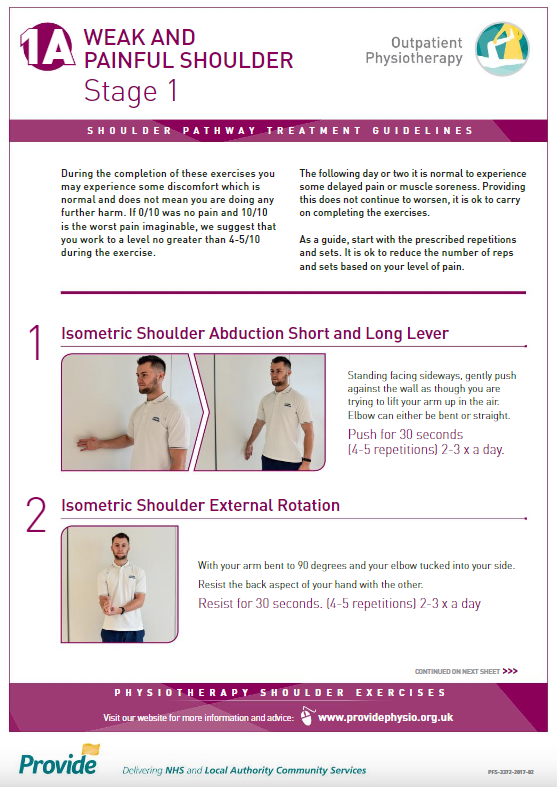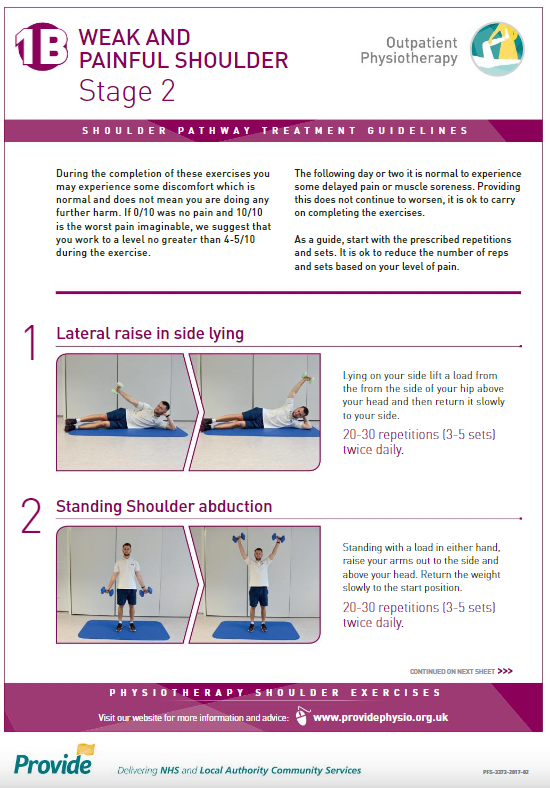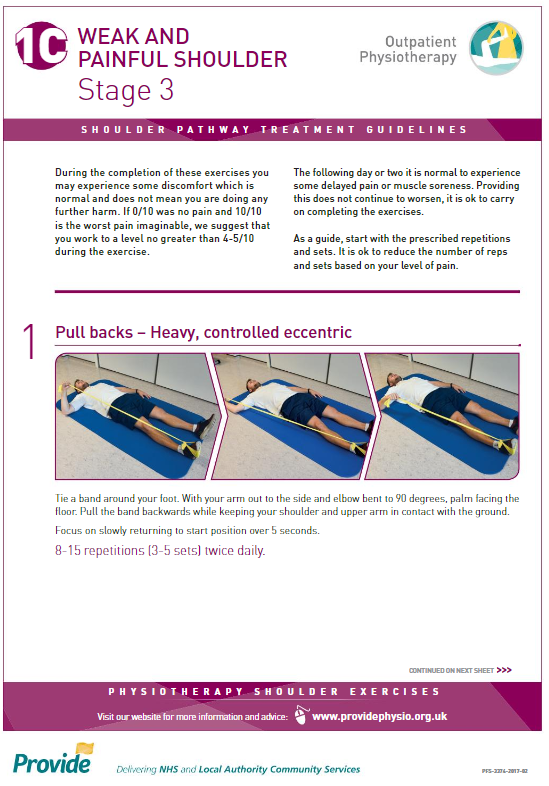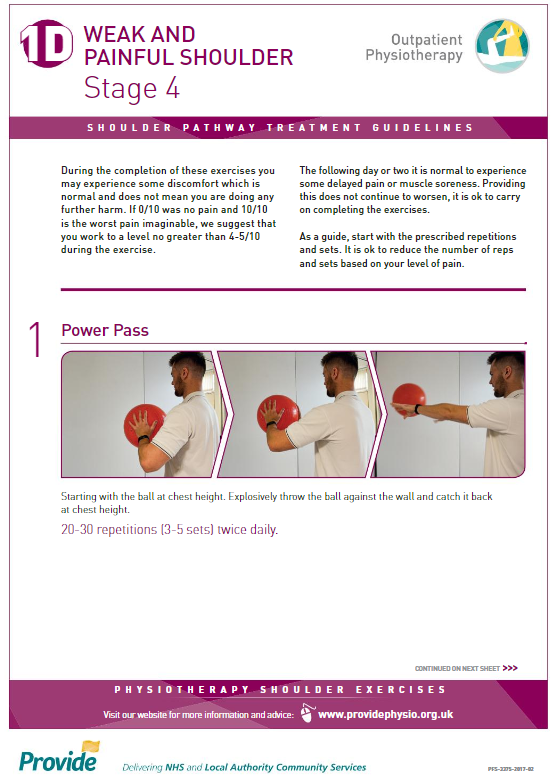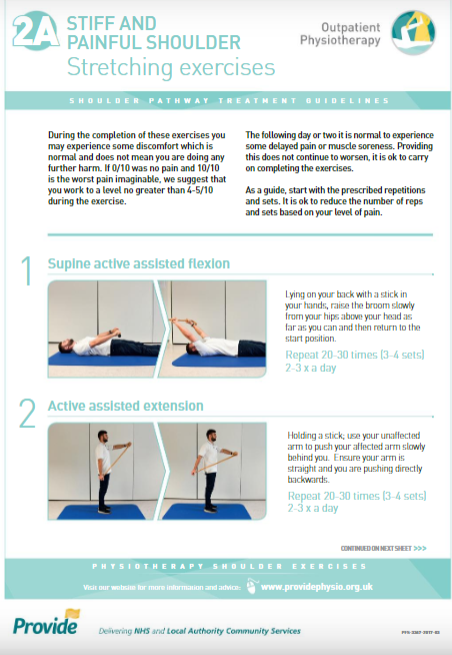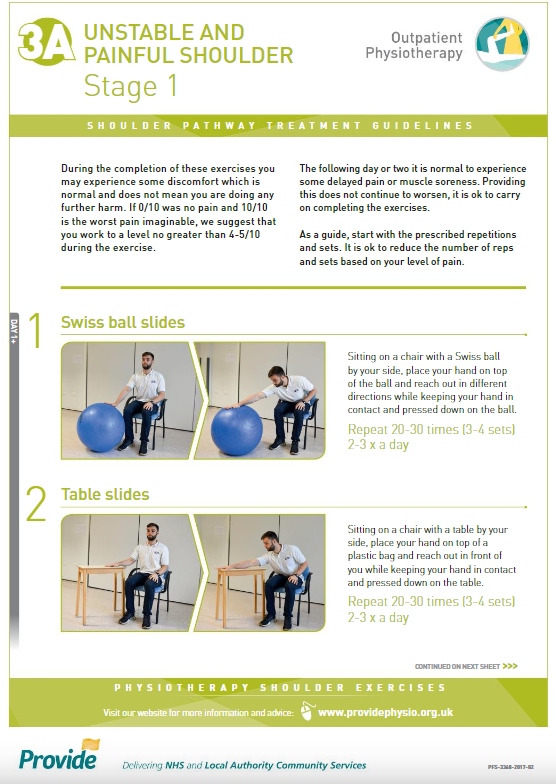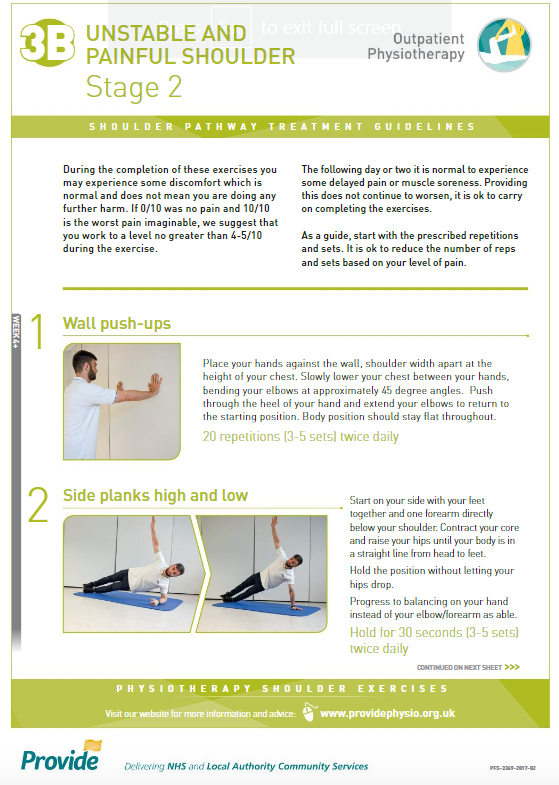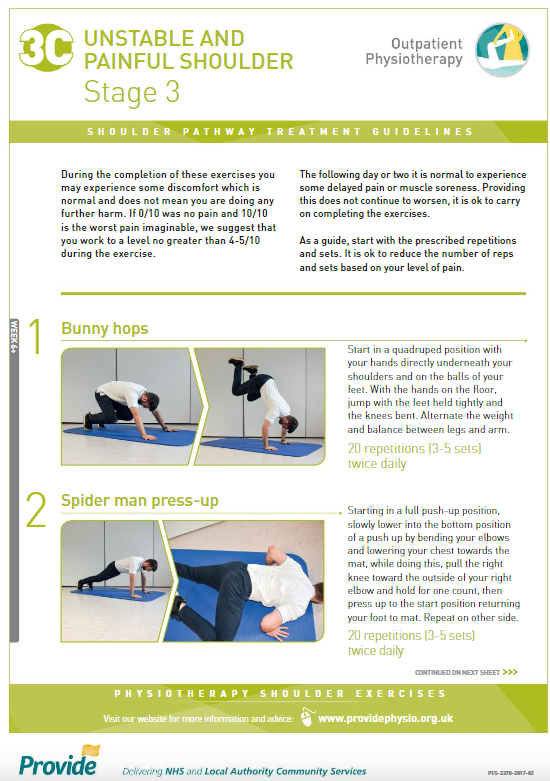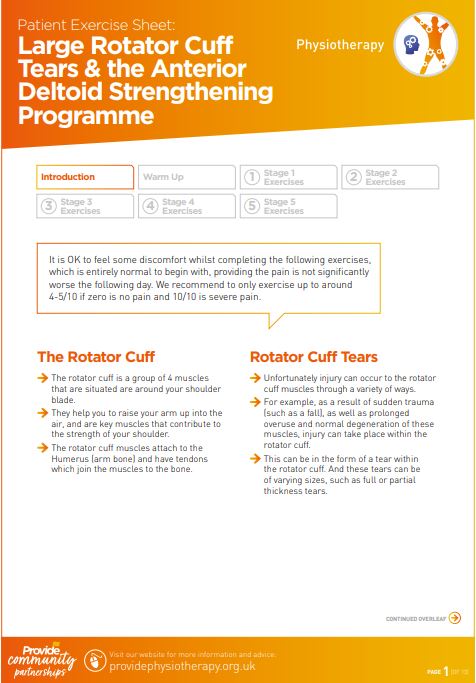Overview
Shoulder pain is common but it is rarely caused by arthritis. The shoulder is the most mobile joint in the body and can be affected by a number of conditions. The most likely cause for shoulder pain is related to the deep tendons of the shoulder, which will improve although can take several months to get better.
Shoulder pain usually responds very well to exercise therapy, and with a little guidance you can begin to rehabilitate your shoulder today. Find out more about your shoulder pain in the other sections for further help.
If you are not sure of the cause of your shoulder pain then click below to complete our Musculoskeletal Symptom Checker to learn about potential causes of your symptoms and the best ways to manage these in the Self Help section.
Type of Shoulder Pain
Stiff And Painful
Frozen shoulder, also known as ‘adhesive capsulitis’, is a common condition where the shoulder becomes stiff and painful usually for no apparent reason although can develop following a shoulder injury or surgery.
The cause of frozen is currently unknown although it is widely believed that the restriction in movement is caused by inflammation, tightening and thickening of the lining of the shoulder joint, called the capsule. The most common people to have the condition are females aged between 40-60 years old.
Although the condition will get better in most cases, even without any treatment, it can take 2-3 years to fully resolve. There are three main phases of frozen shoulder.
-
Freezing stage (lasting two to nine months)
-
Frozen Stage (lasting four to twelve months)
-
Thawing Stage (which lasts from five to twenty-six months)
This leaflet provides information, answers and self-help strategies regarding frozen shoulder and how to manage each phase of the condition
Watch this useful short animated video explaining the condition including symptoms, duration and treatment options.
Click Here for some simple exercises recommended by our physiotherapists that you can carry out daily at home to improve pain and stiffness for frozen shoulder, especially in the Frozen and Thawing Stage.
Sometimes shoulder pain and stiffness is not due to having a frozen shoulder but caused by overactive muscles.
If your shoulder pain and stiffness does not fit the description of a frozen shoulder, you are unlikely to need a steroid injection and will benefit from exercises to relieve the pain and stiffness.
Click Here for some simple exercises recommended by our physiotherapists that you can carry out daily at home to improve pain and stiffness due to shoulder muscle guarding.
If you are over 60 years old and experience a deep ache over your shoulder and upper arm which is worse with certain movements with grinding, clicking or crunching you may have an arthritic shoulder.
If your pain is severe, a steroid injection may help ease it. Exercise therapy is really beneficial in the long-term.
Click Here for some simple exercises recommended by our physiotherapists that you can carry out daily at home to improve pain and stiffness for shoulder osteoarthritis.
Click Here for further information on Osteoarthritis and ways to manage it effectively.
Weak and painful
Subacromial shoulder pain (also known as rotator cuff tendinopathy or subacromial impingement syndrome) is the most common reason for shoulder pain.
The most common symptoms are pain in your shoulder or upper arm region, which gets worse when moving your arm above shoulder height, or sleeping on the painful side at night.
It’s often due to degenerative changes in the rotator cuff tendons, but can sometimes happen suddenly after an injury.
If you are really bothered by you pain, steroid injections can help. Most people improve really well with exercises to strengthen their shoulder muscles.
This leaflet provides information, answers and self-help strategies regarding shoulder subacromial pain.
Watch this short video explaining the benefits of a simple exercise treatment for subacromial shoulder pain followed by Exercise 1, Exercise 2 and Exercise 3 recommended by the UK’s leading shoulder physiotherapists and proven to reduce pain and improve your shoulder function. Alternatively, Click here for the rehabilitation exercise booklet demonstrating the same 3 exercises.
Click Here for a more comprehensive 4-stage exercise rehabilitation programme recommended by our physiotherapists that you can carry out daily at home to improve pain and strength for subacromial shoulder pain.
Arthritis of the shoulder most commonly affects this small joint on top of the shoulder. Symptoms include pain and tenderness at the top of the shoulder and pain when reaching the arm across the body, reaching up high and reaching behind your back.
Steroid injections can help to ease the pain. Range of movement and strengthening exercises will improve the strength and mobility of the shoulder.
Click Here for a more comprehensive 4-stage exercise rehabilitation programme recommended by our physiotherapists that you can carry out daily at home to improve pain and strength for ACJ pain.
Rotator cuff tears can be a common form of shoulder pain and weakness and can occur in a wide range of people at different ages and levels of fitness and health.
The rotator cuff is a group of 4 muscles located around your shoulder that are involved in most lifting and rotational movements of the shoulder. Injuries or tears to these muscles and their associated tendons are common throughout different stages of life and normally classified as either degenerative or traumatic.
Degenerative tears are usually more longstanding and build up over time. These can also be influenced by things such as ageing, lifestyle factors and general health. Whereas traumatic tears of the rotator cuff are more sudden and usually occur through a specific injury, such as a fall or sports.
Tears of the rotator cuff vary in shape and size. Smaller degenerative tears are usually managed in the same way as another common shoulder problem called Subacromial Shoulder Pain – Click Here for more information and exercises on how to manage this condition.
Larger tears, both degenerative or traumatic, often cause more weakness of the shoulder although not necessarily more pain. Management of a large rotator cuff tear will depend on a variety of factors, such as age, functional level, type of tear and pain levels. Only a small percentage of people with this type of injury will need scans or specialist referral, and most can be well managed with physiotherapy and rehabilitation.
Click Here for our information leaflet, which details more about this injury and has some basic exercises that may help with managing your symptoms. You can also see the Anterior Deltoid Programme (add link) which is a progressive exercise programme used by our physiotherapists to help gradually re-strengthen the shoulder and improve function following a large rotator cuff tear.
Unstable And Painful
Some people can be born with loose or unstable shoulders, usually affecting both sides, where they can sometimes voluntarily make their shoulders partially or fully come out of their socket. This usually affects younger people, especially teenagers, who are also going through a number of hormonal changes which can exacerbate the shoulder problem. They may also have extra movement in other joints or have already been diagnosed with joint Hypermobility Syndrome.
Avoid making the shoulder pop out of the socket, where possible, will help although often physiotherapy will be required to improve movement patterns and muscle strength and control of the shoulders with rehabilitative exercises if the condition is causing pain and functional problems.
Surgery is rarely an option for this type of shoulder instability and usually improves with physiotherapy rehabilitation.
Click Here for a more comprehensive 4-stage exercise rehabilitation programme recommended by our physiotherapists that you can carry out daily at home to improve pain, strength and stability of your shoulders.
A shoulder dislocation is when your upper arm fully pops out of the socket, whereas a shoulder subluxation is when it partially and temporarily ‘slips’ out of the socket.
A shoulder dislocation can occur if you fall on to your arm heavily, especially in older people. Most people dislocate their shoulder while playing a contact sport, such as rugby, or in a sports-related accident.
The following symptoms following an injury, suggest you might have dislocated your shoulder:
- unable able to move your arm and it will be very painful
- shoulder will suddenly look square rather than round
- see see a lump or bulge (the top of the arm bone) under the skin in front of your shoulder
If you think you’ve dislocated your shoulder, go to your nearest A&E department. Click Here for more information on how a shoulder dislocation is diagnosed and treated.
Click Here for a more comprehensive 4-stage exercise rehabilitation programme recommended by our physiotherapists that you can carry out daily at home to improve pain, strength and stability following a confirmed shoulder dislocation or subluxation at appropriate time intervals.
Is my shoulder pain likely to persist?
Take our one minute test
This quick questionnaire can help you identify how likely your pain is to persist over the next 6 months and whether you may need some extra support. It has been developed by a team of experts from Keele University – Click here for more information about the tool.
The tool has been shown to be very useful for people with common Musculoskeletal pain to profile individual risk of having a poor recovery and to use as a guide in conjunction with support from a healthcare professional if necessary.
Try out the questionnaire for yourself to see how you score and to get further help and advice. It will also be useful to retake the questionnaire after you have learned more key facts about your pain, either from this website or from a healthcare professional, to re-assess in time whether your shoulder pain problem is improving.
| For question 1 – 9, think about just the last two weeks: |
|---|
| Pain intensity 1. On average, how intense was your pain? [where 0 is “no pain”, 10 is “pain as bad as it could be”] |
| Select one of the options for each question below | Yes | No |
|---|---|---|
| 2. Do you often feel unsure about how to manage your pain condition? | ||
| 3. Over the last 2 weeks, have you been bothered a lot by your pain? | ||
| 4. Have you only been able to walk short distances because of your pain? | ||
| 5. Have you had troublesome joint or muscle pain in more than one part of your body? | ||
| 6. Do you think your condition will last a long time? | ||
| 7. Do you have other important health problems? | ||
| 8. Has pain made you feel down or depressed in the last two weeks? | ||
| 9. Do you feel it is unsafe for a person with a condition like yours to be physically active? | ||
| 10. Have you had your current pain problem for 6 months or more? |
High Risk
This test suggests you have some serious concerns about how well your shoulder pain will recover.
This may be related to feeling low and anxious generally or by being afraid that you might have done something serious to your shoulder.
It might help to discuss your concerns with a doctor or physiotherapist if things are still not improving over the next few weeks after following the advice and exercise in the Self Help section.
Also, visit the section on Persistent Pain for more information and support.
Most shoulder problems are not related to a serious condition. Allowing yourself to move normally, without too much worry, will help your shoulder to return to normal.
Painkillers often help you to move normally, while your shoulder recovers.
If you are feeling low or anxious, whether this I related to your shoulder pain or not, and you would like further help and support, visit NHS website – Health in Mind.
Alternatively, Click Here for an interactive online self-help programme to help manage symptoms of depression and anxiety.
Medium Risk
This test suggests you may have some doubts about how well your shoulder pain will recover.
This may be related to feeling low and anxious generally or by being afraid that you might have done something serious to your shoulder.
It might help to discuss your concerns with a doctor or physiotherapist if things are still not improving over the next few weeks after following the advice and exercise in the Self Help section.
99 times out of 100 your shoulder pain is not related to a serious condition. Allowing yourself to move normally, without too much worry, will help your shoulder to return to normal.
Painkillers can help you to move normally, while your shoulder recovers.
You might also want to access the Essex Lifestyle Service for further support and help on making healthy lifestyle choices and live healthier lives as this could be contributing to your shoulder pain.
Low Risk
Congratulations! You most likely have the right ideas about your shoulder pain, and feel in control of how you manage your recovery.
We all know an episode of shoulder pain is very annoying, and at times extremely painful. Carrying on as normal and continuing to move your shoulder allows the quickest recovery, and stops your shoulder stiffening up and losing strength.
Keep going as you are, although read this short leaflet for more information and advice to get better even quicker.
You might also want to access the Essex Lifestyle Service for further support and help on making healthy lifestyle choices and live healthier lives as this could be contributing to your shoulder pain.
Self help
Evidence has shown that people who understand their Musculoskeletal health problem and take an active involvement to help themselves have a much better outcome.
Here are some really helpful leaflets, videos, exercises and useful links to other websites that have been approved by our physiotherapists so that you can start getting better today.
This information is not intended or implied to be a substitute for professional medical advice, diagnosis or treatment if required. All content is for general information purposes only.
Click Here to access our getUBetter app, which is an easy, safe and effective way to support your recovery.
Leaflets
Videos
Exercises
Useful Links
- Information and exercise videos for the most common cause of shoulder problems – Subacromial shoulder pain, produced by leading shoulder surgeons and physiotherapist in the UK.
- Excellent website on common shoulder disorders Including an interactive guide to help diagnose your shoulder problem and treatments that might be needed.
- Further information on Frozen shoulder including the ‘do’s and don’ts’ to ease pain from frozen shoulder yourself as well as when to seek medical advice and other treatments
- Useful additional information on subacromial shoulder pain, also known as Shoulder impingement , including symptoms, causes, when to get help and treatment options
Further Support
If your shoulder pain is still not improving despite following the advice and guidance provided on the website and you score a ‘Medium’ or ‘High Risk’ when completing the ‘Is my shoulder pain likely to persist?’, you may require further help and support from the Physiotherapy Service. Please click on the ‘Physiotherapy Self-Referral’ box to refer yourself to the service for further management of your back problem.
Remember that most causes of shoulder pain are not due to anything serious, although there are rare cases where you would need to seek urgent medical help. Contact your GP or NHS 111 for immediate advice if you have any of the following symptoms:
- Nerve like pain in your arm and hand with pins and needles, numbness, coldness, cramp
- Previous history of cancer, constant unremitting pain, severe night pain, unexplained weight loss, unexplained lumps
- Early morning stiffness lasting more than 45 minutes, rapidly worsening pain and stiffness, your shoulder feels warm to touch and you are suffering from fatigue
- History of recent surgery or a recent open wound. Your shoulder feels hot and swollen and you feel unwell with possible fever and chills.
- Trauma with sudden pain and weakness or sudden deformity and loss of movement
Click here for further support and guidance.
FAQs
- Promotes healing
- Strengthens your muscles and tendons
- Increases your confidence and trust in your shoulder
- Reduces your pain and fear to move
- Builds your capacity and tolerance for activity
- Helps you return to living a full and busy life once more
Tears of the rotator cuff are very common and are a normal part of the ageing process. Most rotator cuff tears do not cause any pain or problem.
The rotator cuff tendons are all connected to create a large broad flat structure around the top of your arm bone, rather like a blanket. So when one tendon is torn, you can picture it like a hole in this blanket. A hole in a blanket doesn’t mean a blanket becomes useless, and this is the same for a tear in your rotator cuff.
Exercises strengthen the rest of the blanket to compensate for this ‘hole’ and are very safe to do. Exercise will reduce your pain and fear as well as improve your function.
